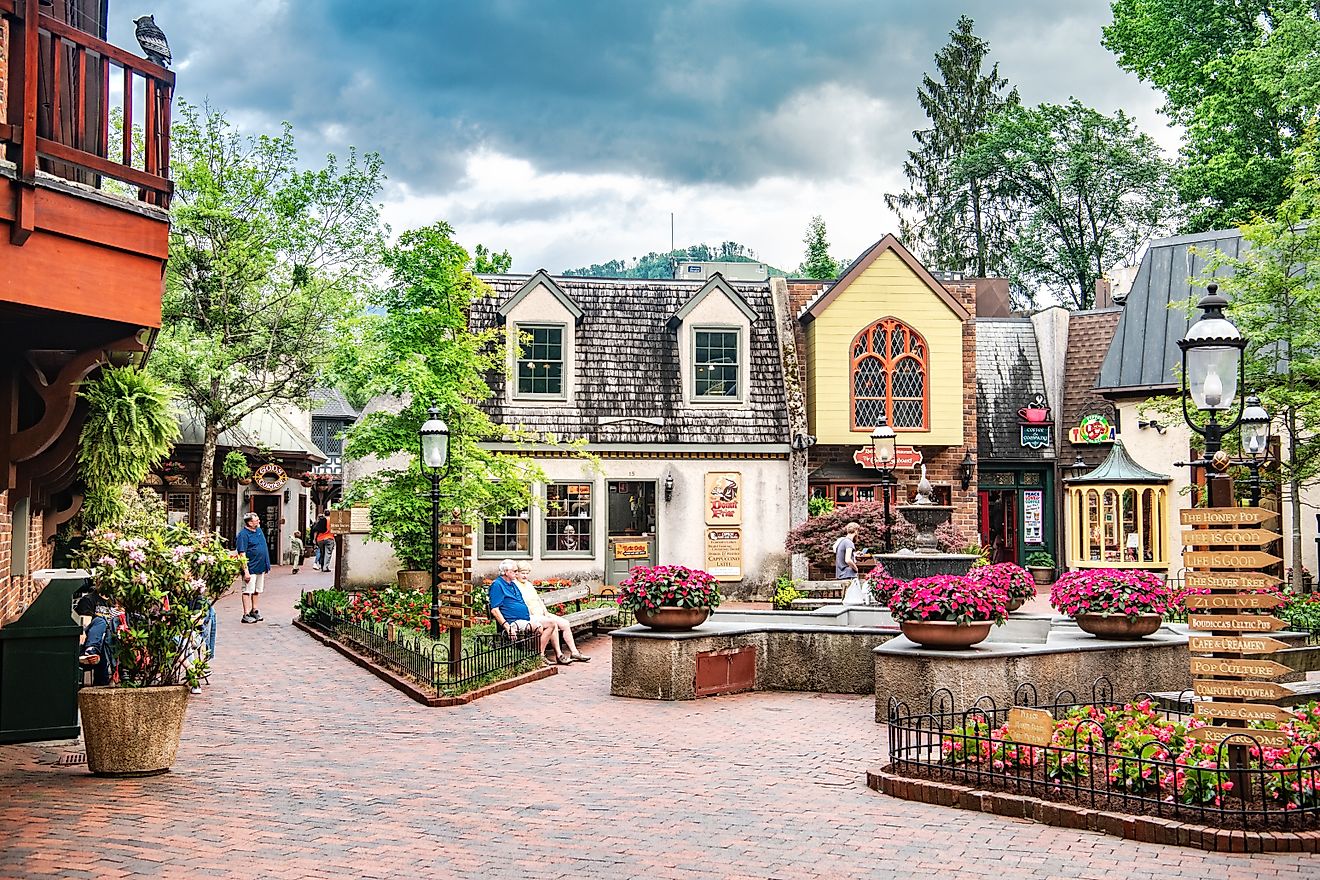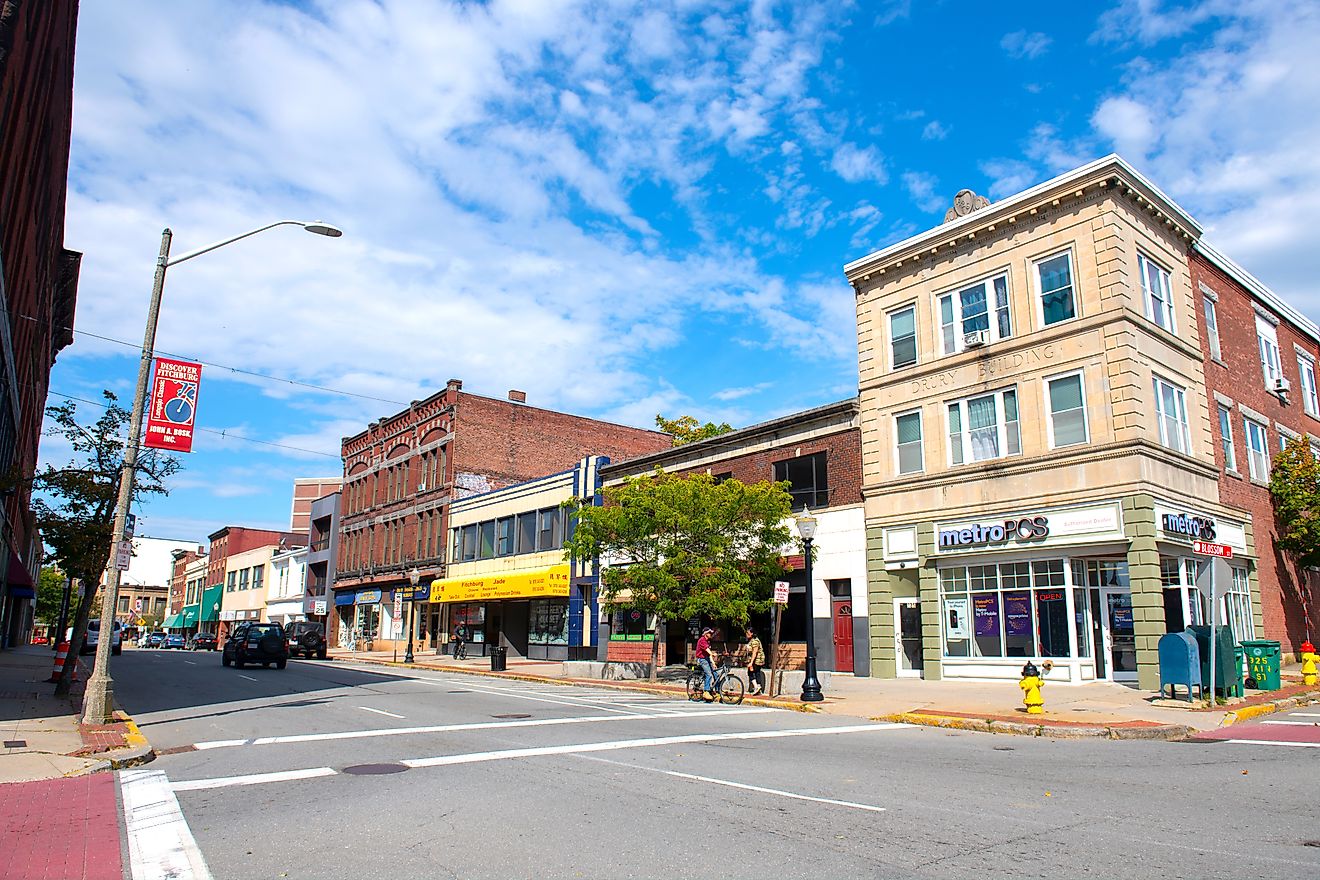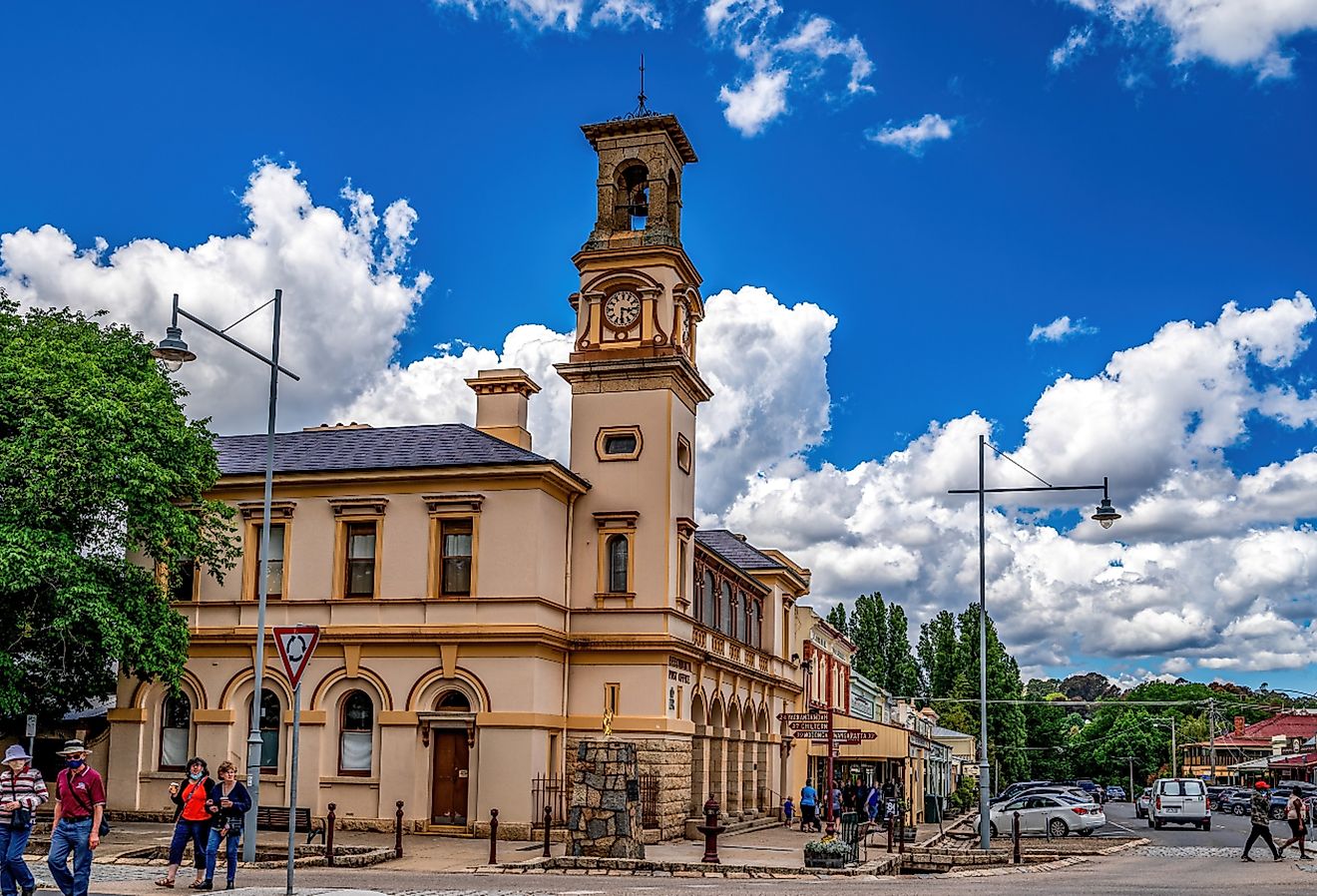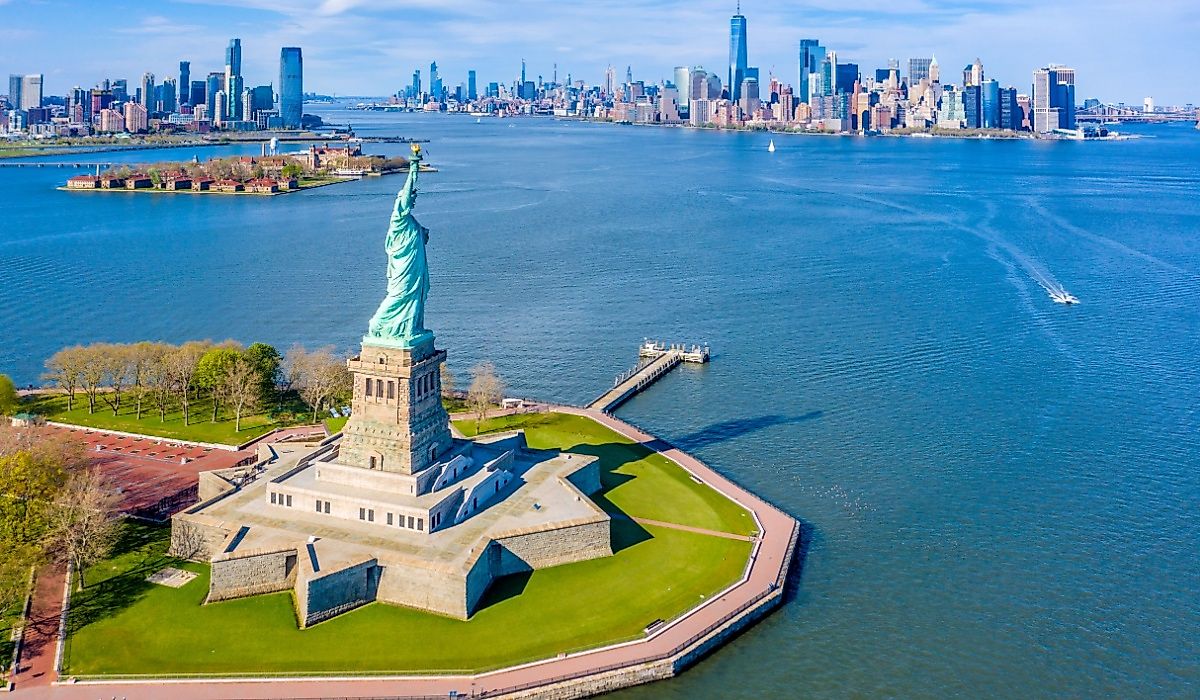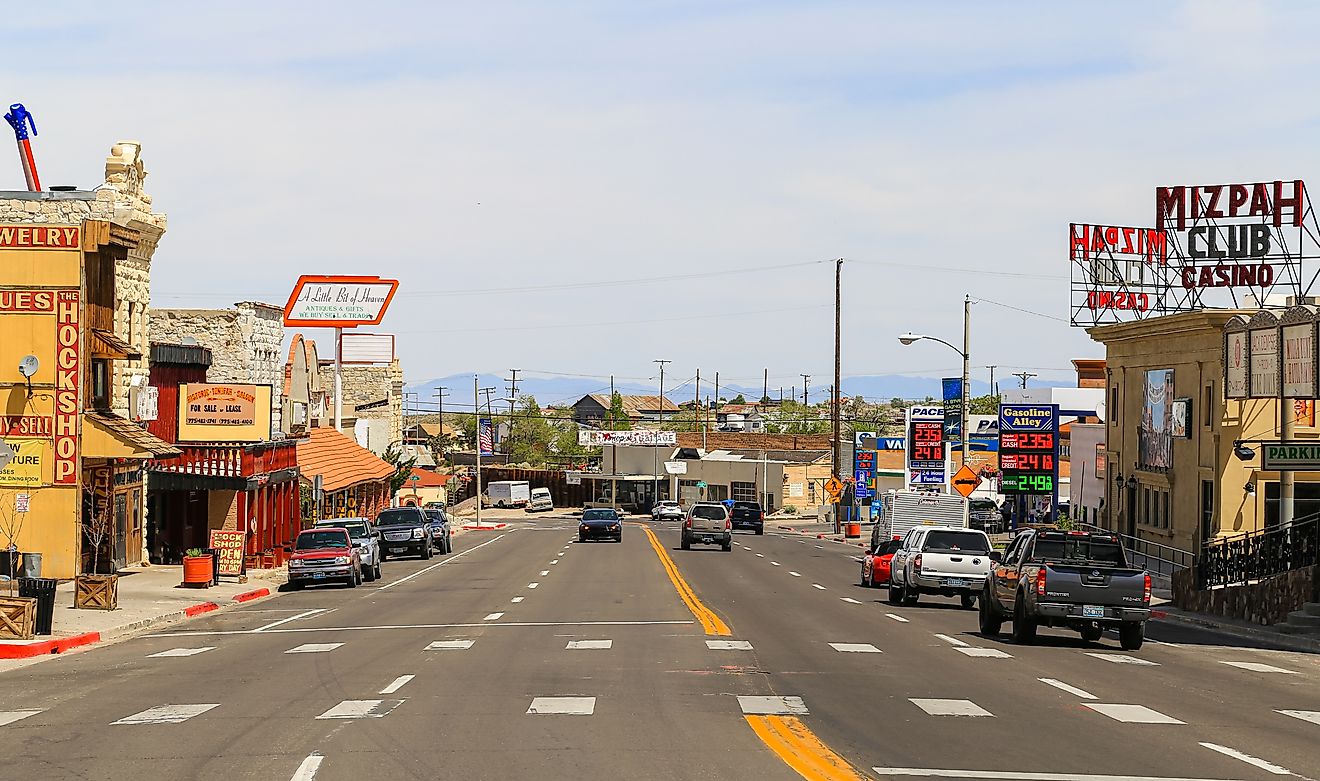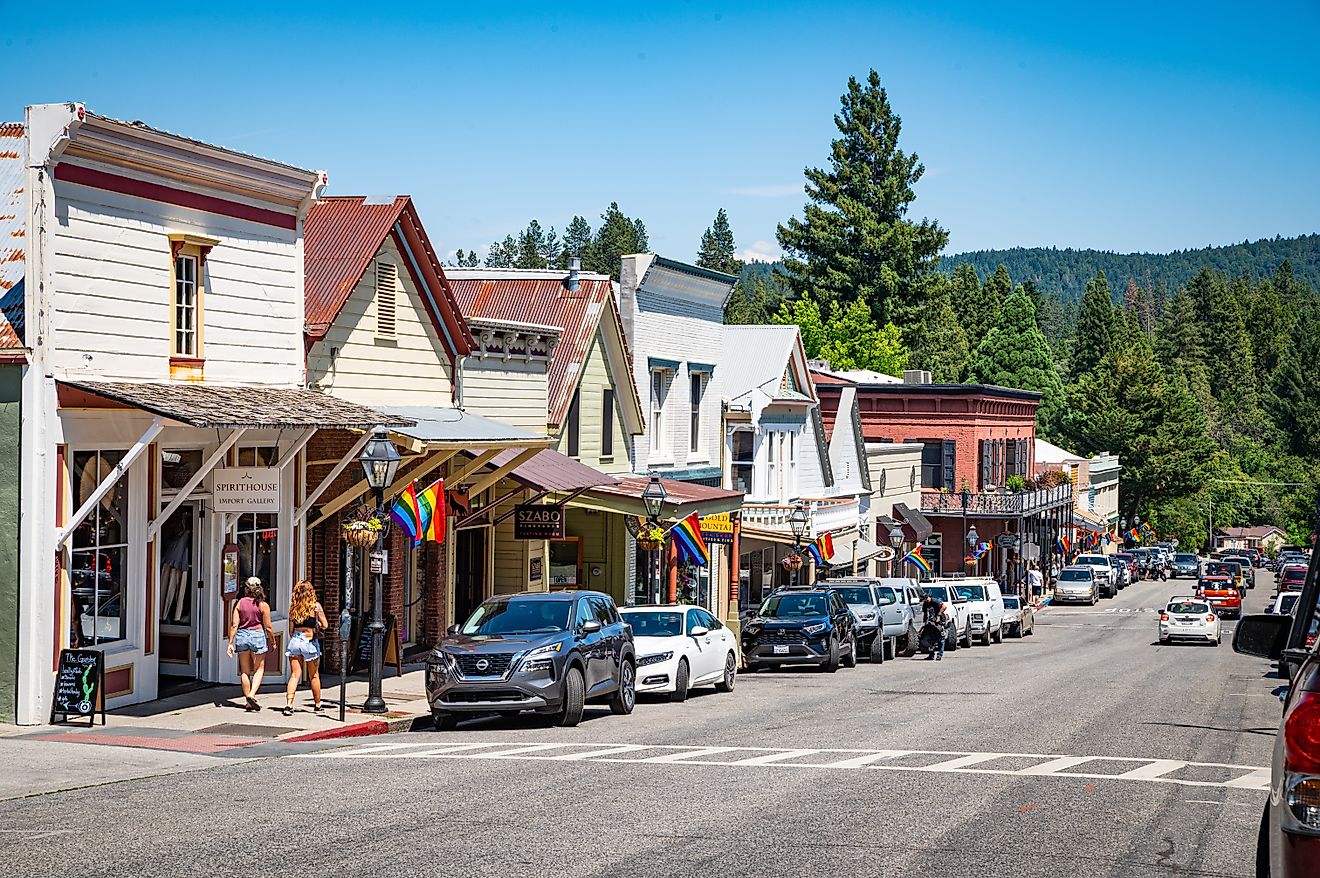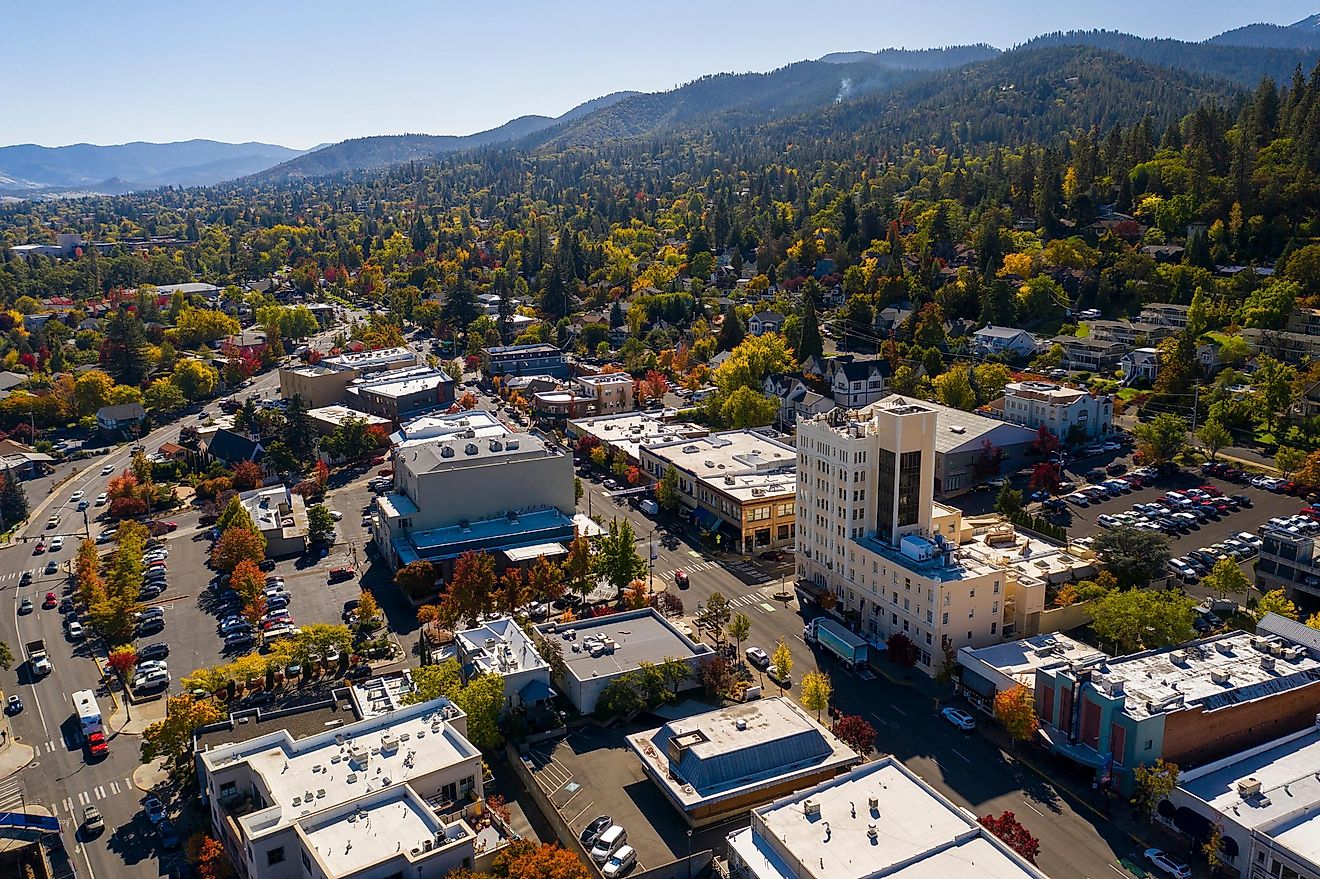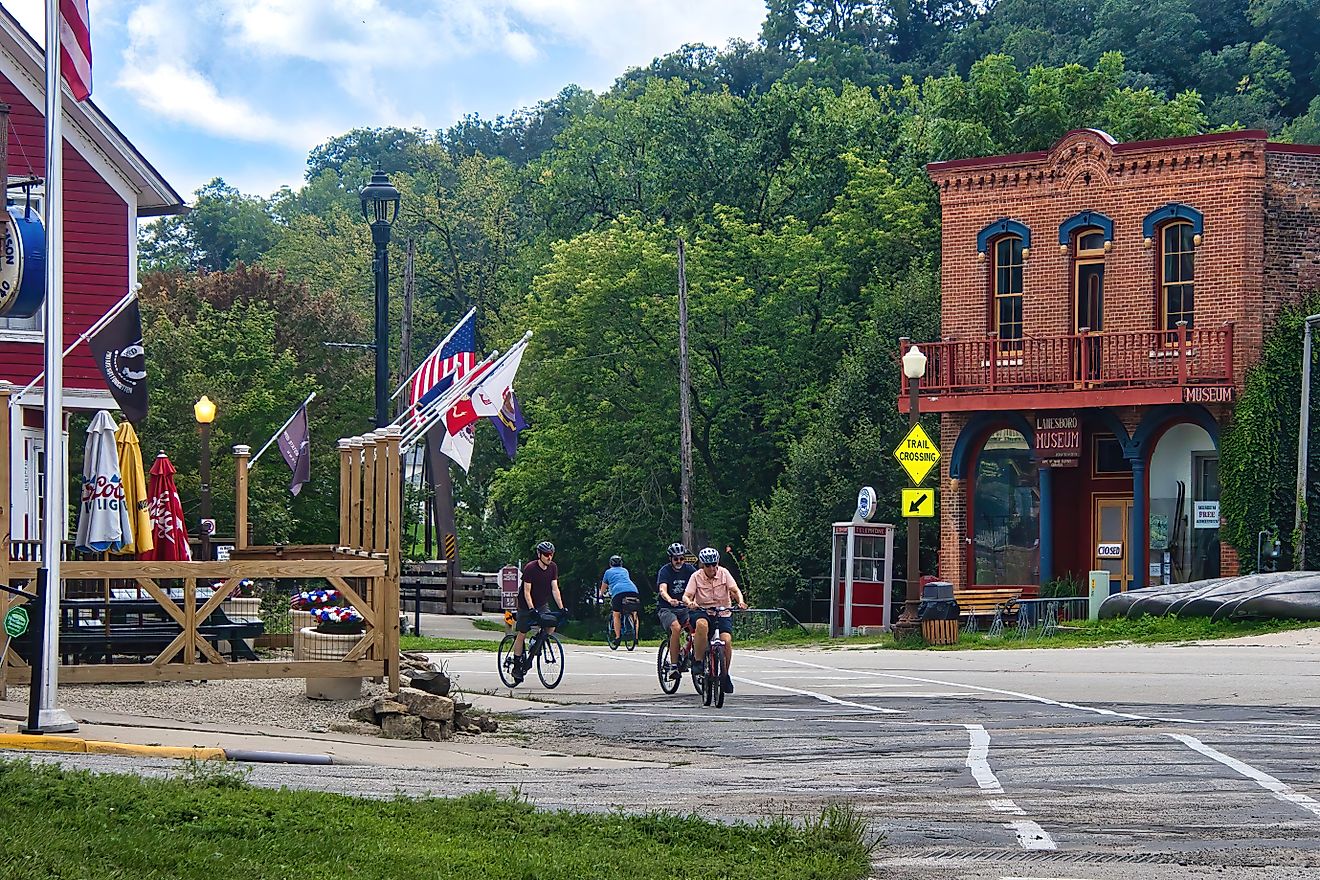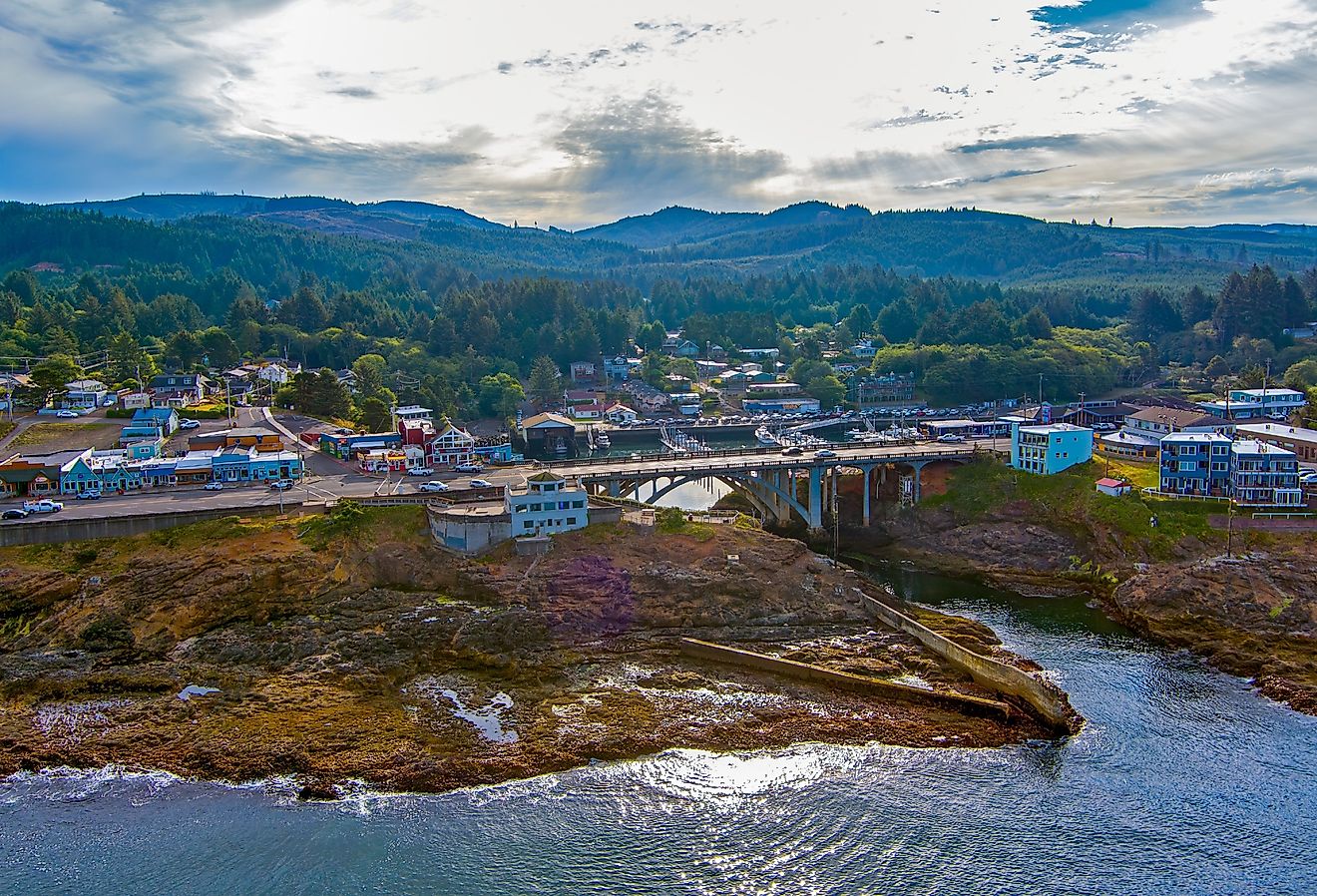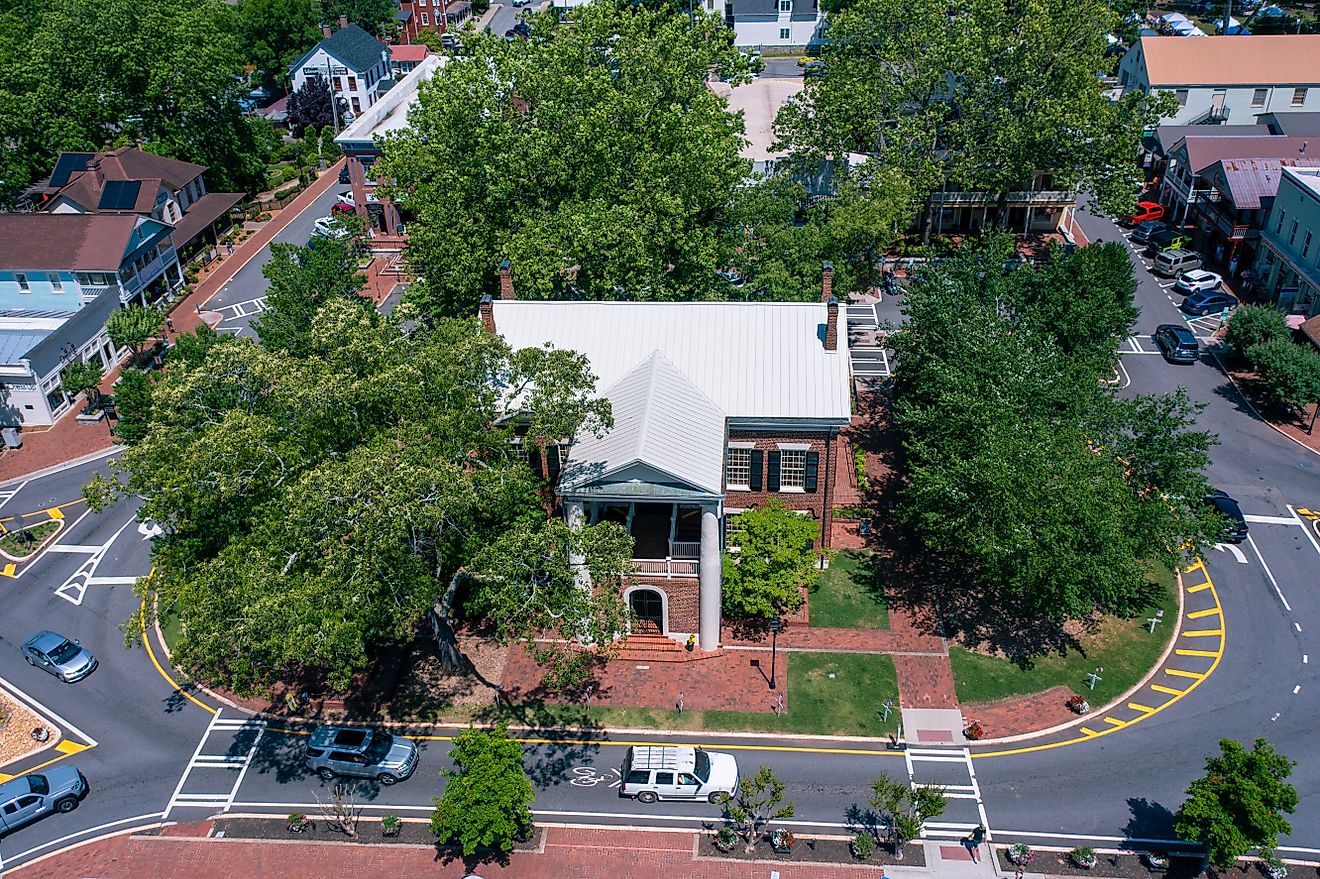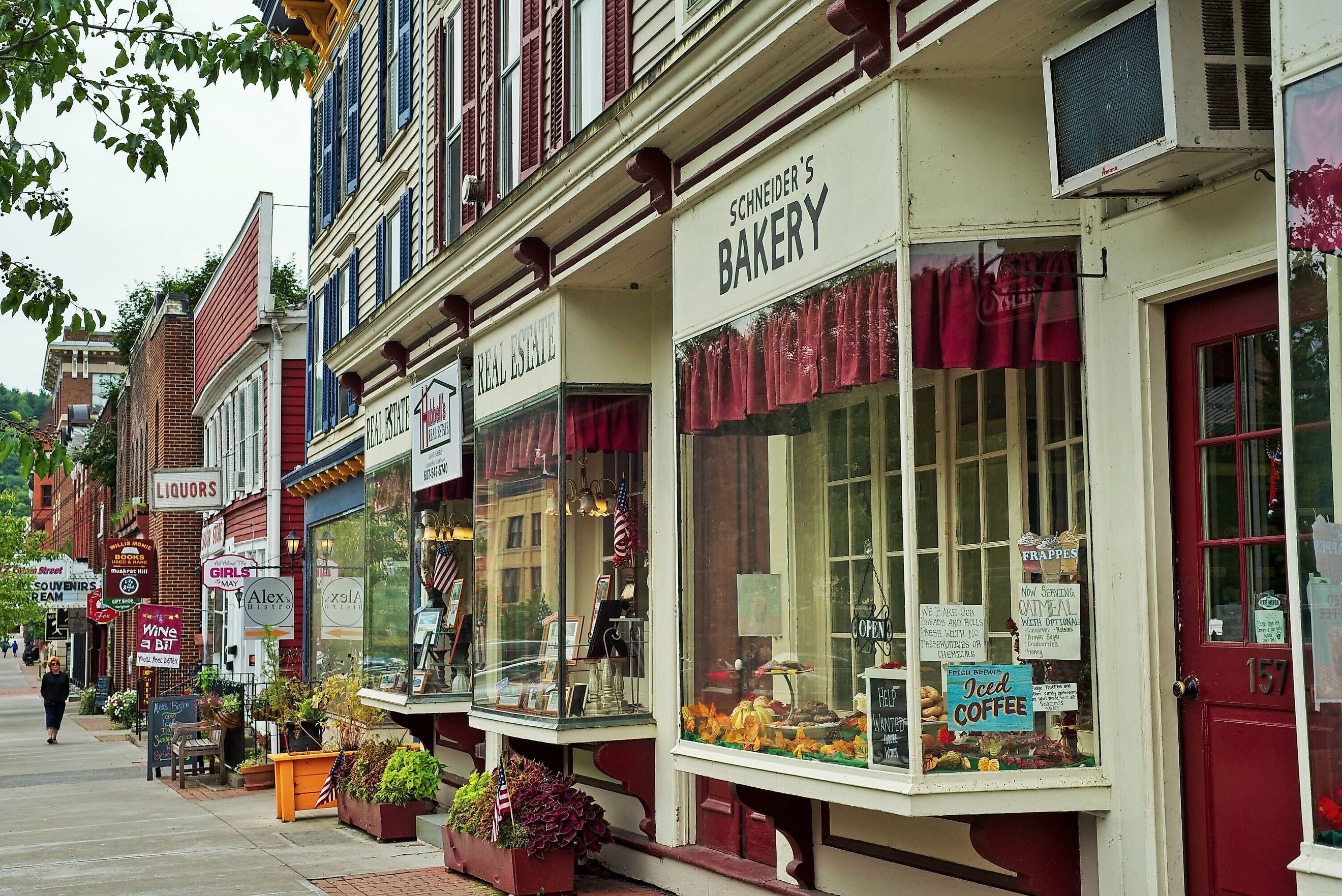
9 Prettiest Downtown Strips In New York
Ever notice how the Empire State’s GPS seems to default to Times Square? Zoom out, then pan north, west, and lakeside, and the neon hushes into church-bell chimes, wooden porches, and corner cafés dishing gossip.
New York’s small-town downtowns didn’t get the memo that “Main Street” was supposed to fade; they kept the 1890 street grids, repurposed the mills, and layered fresh micro-breweries atop abolitionist stops. The result is a constellation of walkable cores that trade billboards for hand-painted transoms and skyline views for mountain ridgelines.
This lineup of nine villages reads like a travel-size anthology of state history, yet they share two traits: compact downtown strips you can cover on foot before the latte cools, and communities stubbornly proud enough to keep the storefront lights on after five.
Rhinebeck
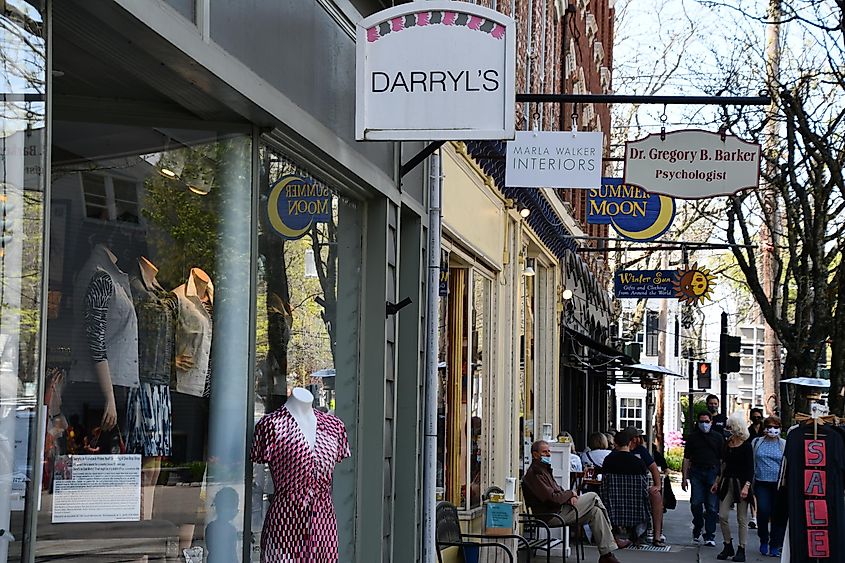
Rhinebeck’s town center sits 100 miles north of Manhattan, but it has one of the oldest continuously operating inns in the U.S., the Beekman Arms, which has hosted figures from George Washington to FDR. The town lies on land originally inhabited by the Sepasco band of the Mohican people, and its Dutch and Palatine roots still show in the structure of the streets and buildings. The Starr Library on West Market Street predates the Civil War. The town's 19th-century Dutch Reformed Church stands directly at the center, marking the geographic and cultural axis of Rhinebeck’s downtown.
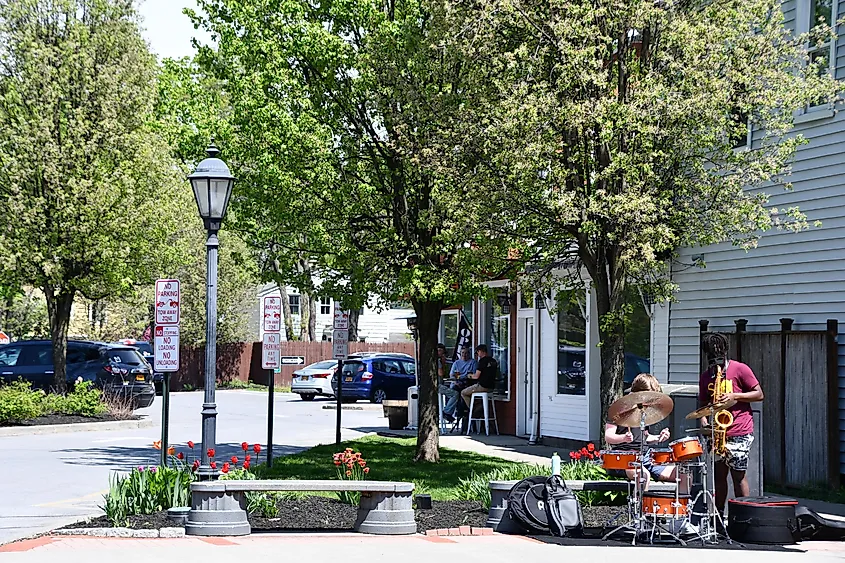
East Market and Montgomery Streets host Oblong Books, a locally owned shop with in-store events nearly every week. Winter Sun & Summer Moon sells imported textiles, ceramics, and spices. Samuel’s Sweet Shop, co-owned by actor Paul Rudd, carries Dutch-style candies. Upstate Films runs single-screen arthouse programming inside the former Starr Opera House. The Dutchess County Fairgrounds lie just outside downtown and hold antique shows and farm expos. Down the block, Le Petit Bistro serves Alsatian onion tarts and duck confit. At nearby Legion Park, residents play horseshoes on summer evenings.
Clayton
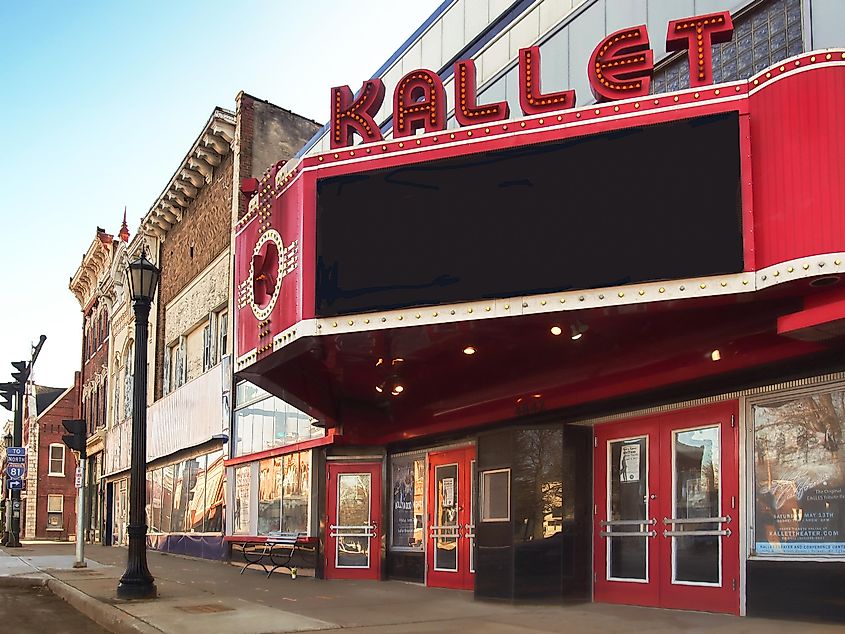
Clayton, situated on the southern bank of the St. Lawrence River, has a rich history as a shipbuilding and lumbering port dating back to the 19th century. The village's downtown area, recognized as the Clayton Historic District, features architecture from the Italianate, Romanesque, and Late Victorian periods, reflecting its maritime heritage.
Visitors can explore the Antique Boat Museum, which houses over 320 unique boats and hosts the country's longest-running annual Antique Boat Show and Auction. The Thousand Islands Museum and the Thousand Islands Arts Center offer insights into the region's history and arts scene. For dining, Bella's at 602 Riverside Drive provides meals with river views, while The Lyric Coffee House, located in a renovated 1914 theater, offers coffee and light fare. Wood Boat Brewery serves craft beers and pizzas, and The Channelside offers waterfront dining . Frink Park, a transformed former ferry terminal, now serves as a venue for performances and mooring for visiting ships . Shopping options include The Golden Cleat for river-themed jewelry and The Mason Jar for home décor .
Cooperstown
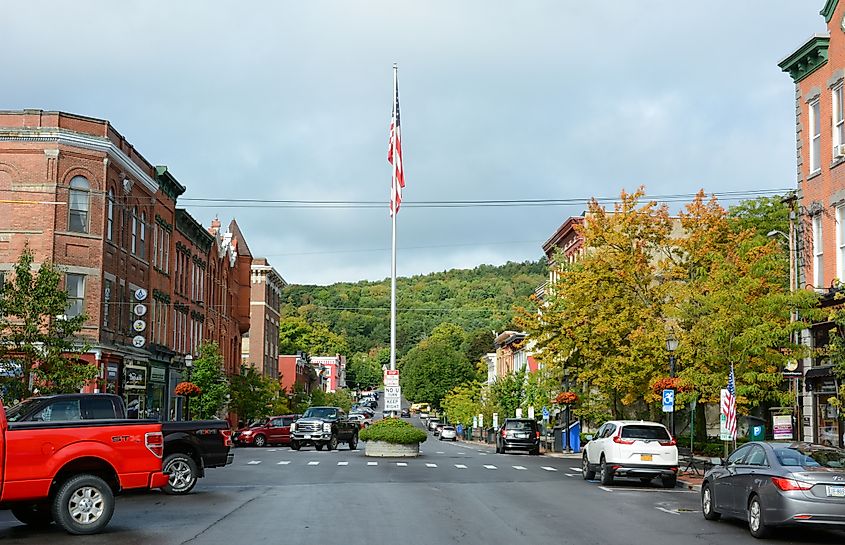
Cooperstown's downtown is anchored by the National Baseball Hall of Fame and Museum at 25 Main Street, which opened in 1939 and houses artifacts such as Babe Ruth’s bat and Jackie Robinson’s jersey. Adjacent to the Hall is Doubleday Field, a stadium built in 1920 that hosts amateur games and the annual Hall of Fame Classic. The Fenimore Art Museum, located at 5798 NY-80, offers collections of American folk art and Native American artifacts, including the Thaw Collection. Nearby, the Fenimore Farm & Country Village (formerly The Farmers' Museum) at 5775 NY-80 features 19th-century buildings and the Empire State Carousel, a hand-carved merry-go-round celebrating New York State's history.
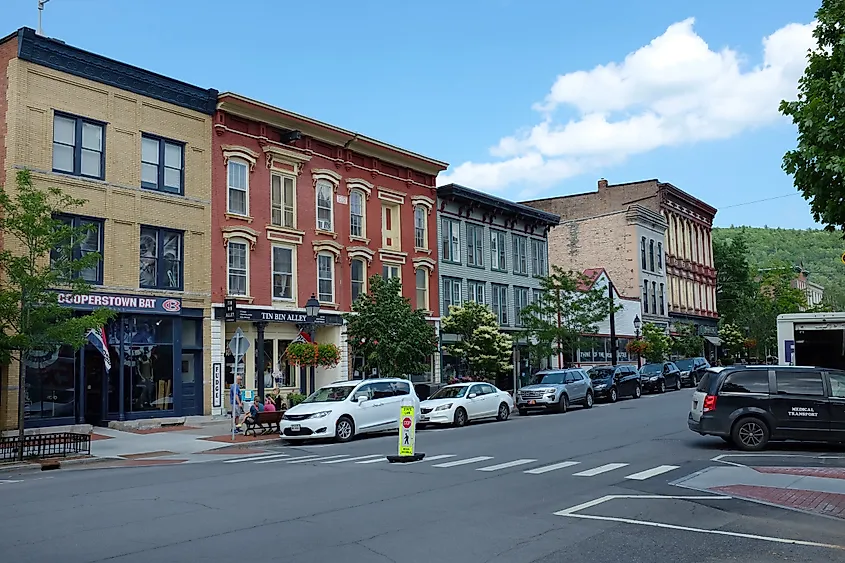
Main Street includes establishments such as the Cooperstown Diner, known for its breakfast offerings, and Schneider’s Bakery, which has been serving baked goods since 1887. Lakefront Park, situated at the foot of Otsego Lake, provides a public space for relaxation and views of the lake. The Cooperstown and Charlotte Valley Railroad offers heritage train rides departing from the historic depot on Railroad Avenue.
Cazenovia

Cazenovia has origins as a planned settlement founded in 1793 by John Lincklaen, an agent of the Holland Land Company. The village was named after Theophilus Cazenove, Lincklaen's supervisor. In 1850, Cazenovia hosted the Fugitive Slave Convention, chaired by Frederick Douglass, marking it as a significant site in abolitionist history.
Albany Street features establishments such as the Lincklaen House, a historic inn and restaurant. The Brae Loch Inn, located nearby, offers Scottish fare and accommodations. The Brewster Inn, situated on the shores of Cazenovia Lake, provides dining with lake views. Lakeland Park offers public access to the lake, including swimming and boating facilities. The Lorenzo State Historic Site, once Lincklaen's residence, is open for tours. The Cazenovia Public Library houses a museum with artifacts including an Egyptian mummy. Stone Quarry Hill Art Park, located just outside the village, features outdoor sculptures and walking trails.
Saranac Lake

Saranac Lake's downtown, located within the Adirondack Park, is historically significant due to its role as a center for tuberculosis treatment in the late 19th and early 20th centuries. The village's architecture reflects this history, with numerous "cure cottages" designed for patient care. The Berkeley Square Historic District, encompassing parts of Main Street and Broadway, features buildings from 1867 to 1932, including the Harrietstown Town Hall with its distinctive domed tower. The Saranac Laboratory Museum offers exhibits on the village's medical history.
Downtown attractions include the Adirondack Artists Guild and NorthWind Fine Arts, showcasing regional art. The Adirondack Center for Loon Conservation provides educational exhibits on local wildlife. Dining options feature Bitters & Bones, known for its craft beers and pub fare , and Origin Coffee Co., offering specialty coffees. The Adirondack Carousel, with hand-carved animal figures, is a family-friendly attraction. Outdoor enthusiasts can access the Adirondack Rail Trail for walking and biking. Lake Flower's waterfront provides opportunities for paddling and scenic views.
Hammondsport
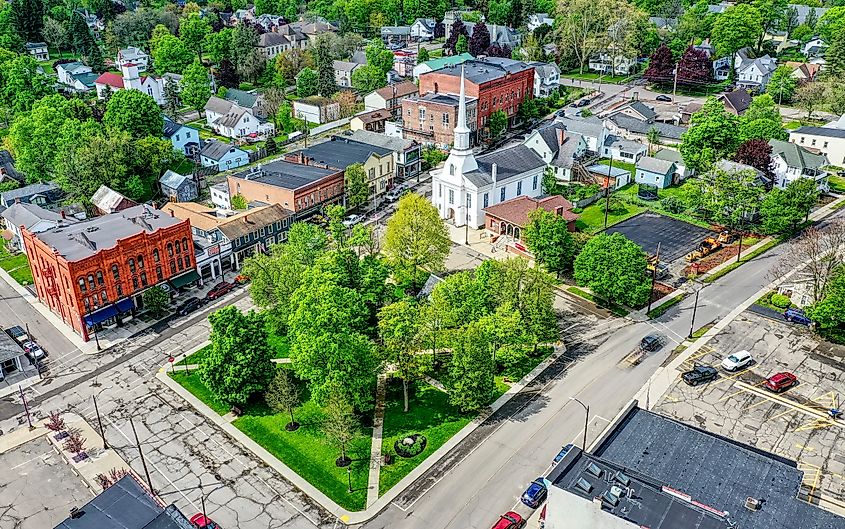
Hammondsport, situated at the southern tip of Keuka Lake, is notable for its contributions to aviation history. Glenn H. Curtiss, a pioneer in aviation, was born here and developed the first successful seaplane, tested on Keuka Lake. The Glenn H. Curtiss Museum, located on NY-54, exhibits Curtiss's innovations in motorcycles and aircraft, including the "June Bug" and early flying boats. Additionally, the Finger Lakes Boating Museum on Lake Street showcases the region's boat-building heritage, featuring over 160 boats and interactive exhibits. The Pulteney Square Historic District, with its 19th-century architecture, reflects the village's historical significance.
The Village Tavern on Shethar Street provides a selection of local wines and craft beers. Crooked Lake Ice Cream Company, also on Shethar Street, serves ice cream flavors inspired by local history. Depot Park, located at the lake's edge, features a public dock and picnic areas. Nearby, the Pleasant Valley Wine Company, established in 1860, offers tours of its historic cellars. The Hammondsport Hotel on Route 54 provides accommodations with views of Keuka Lake.
Lewiston
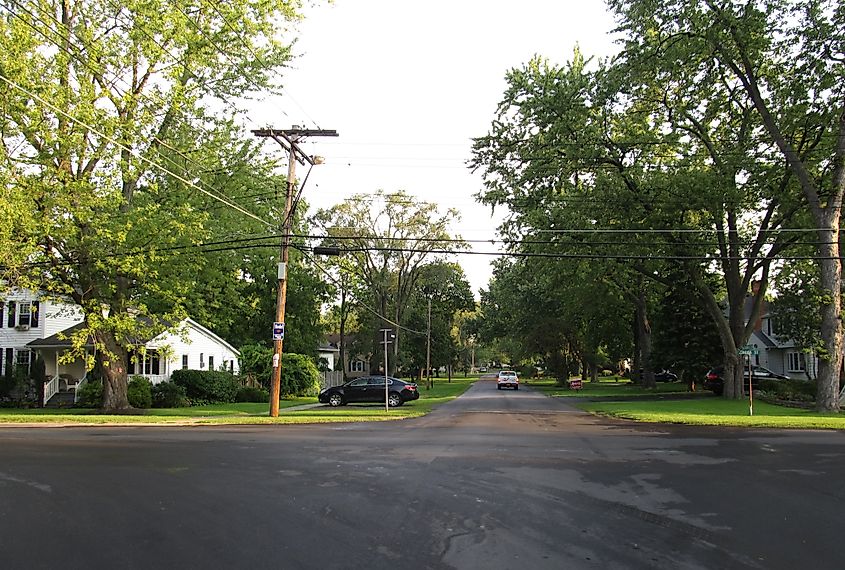
Lewiston, located along the Niagara River, was the first European settlement in Western New York and played a pivotal role in the Underground Railroad, serving as a final stop before freedom in Canada. The village's Center Street is lined with historic buildings and offers a glimpse into its storied past.
Visitors can explore the Lewiston Museum to delve deeper into the area's history. Artpark, a state park and cultural venue, hosts various performances and art installations. For dining, The Brickyard Pub & BBQ offers a selection of smoked meats and craft beers. Orange Cat Coffee Co. provides a range of coffee beverages and baked goods. The Silo, situated by the river, serves casual fare with scenic views. Additionally, the Freedom Crossing Monument commemorates the village's role in the Underground Railroad.
Cold Spring
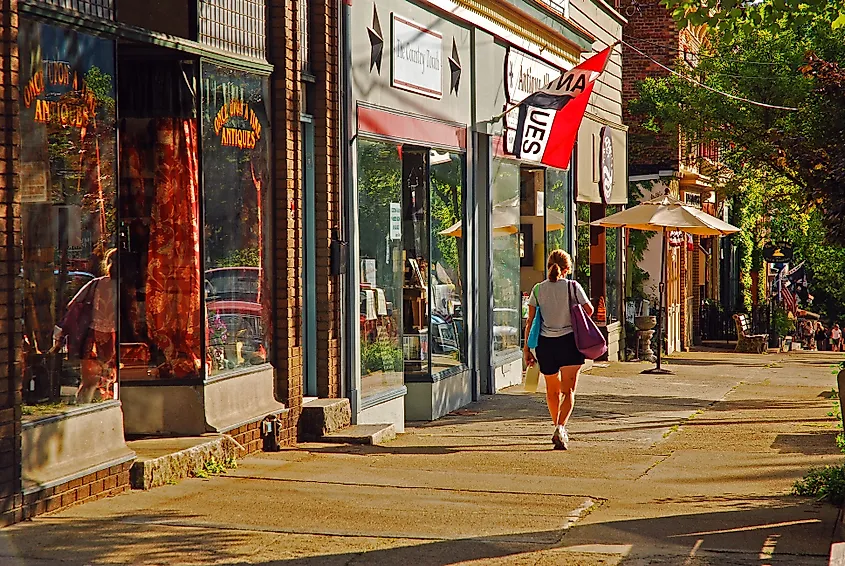
Cold Spring's development was significantly influenced by the establishment of the West Point Foundry in 1818, which produced artillery for the U.S. Army during the Civil War. The foundry's remnants are now part of the West Point Foundry Preserve, an area that offers insights into the village's industrial past. Additionally, the village's Main Street, characterized by 19th-century buildings, reflects its historical roots.
Visitors to Cold Spring can explore the Putnam History Museum, which provides exhibits on the area's history, including its role in the Civil War. The Magazzino Italian Art museum, dedicated to postwar and contemporary Italian art, is another cultural attraction in the vicinity. The Julia L. Butterfield Memorial Library, established in 1913, serves as a resource for both residents and visitors interested in the area's history. The village's location also provides access to the Hudson Highlands State Park, offering opportunities for outdoor activities.
Skaneateles
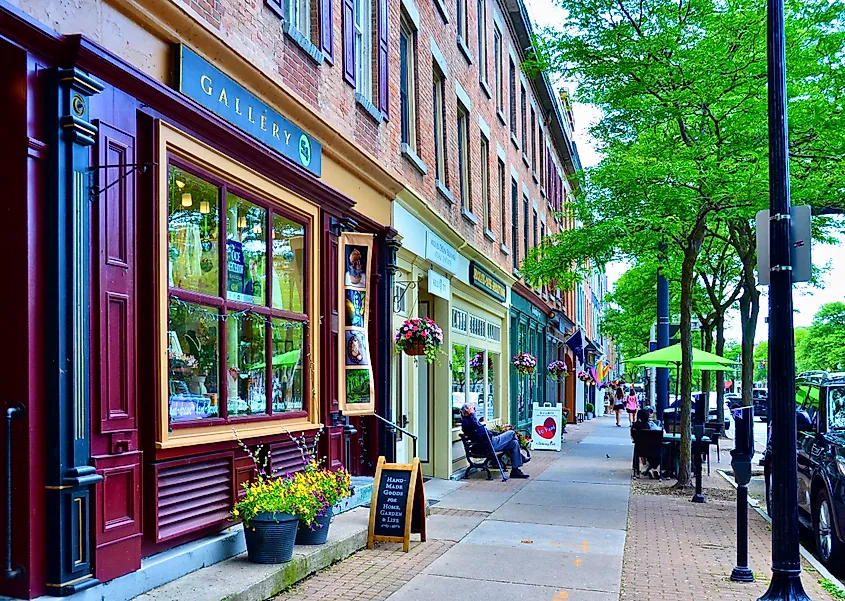
Skaneateles sits at the northern tip of Skaneateles Lake, one of the Finger Lakes, known for its clear waters. The village's name, derived from the Iroquois term for "long lake," reflects its indigenous heritage. Established in the early 19th century, Skaneateles became a hub for various industries, including woolen mills and boat manufacturing. The Skaneateles Historic District, encompassing parts of Genesee and Jordan Streets, features architecture from the 19th and early 20th centuries, housing a mix of boutiques, galleries, and restaurants.
Start your tour by checking out the Skaneateles Historical Society Museum, located in an 1840 stone building, which offers exhibits on the village's history, including its role in the Underground Railroad. The John D. Barrow Art Gallery, situated within the Skaneateles Library, showcases 19th-century landscape paintings. Dining options include the Sherwood Inn, established in 1807, offering views of the lake, and Blue Water Grill, known for its seafood dishes. Clift Park provides public access to the lake, with facilities for swimming and picnicking. Mid-Lakes Navigation offers boat cruises on Skaneateles Lake, providing scenic views of the surrounding area.
Each downtown profiled proves that New York’s charisma is not confined to Broadway lights. Walkable grids, museum archives, and waterfront parks keep heritage visible while local kitchens and craft cellars push it forward. These nine villages collectively preserve Mohawk pathways, Erie Canal timber, Civil-War artillery, and early flight—all within storefront reach. Plot them on a loop, linger after dusk, and you’ll find the state’s future resting comfortably inside its past.
